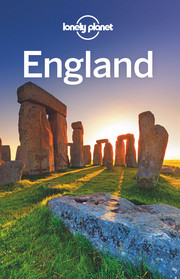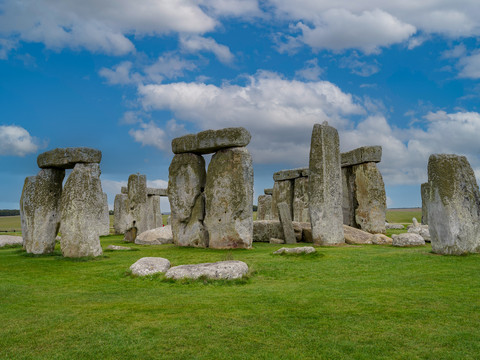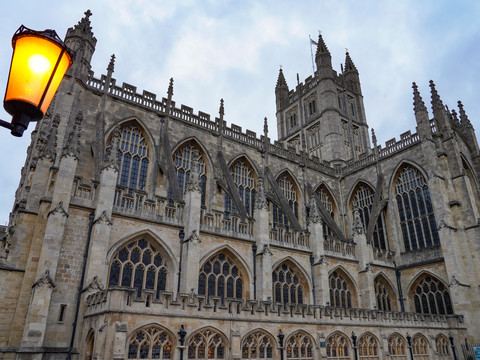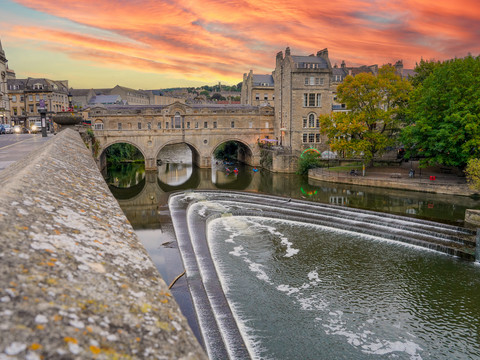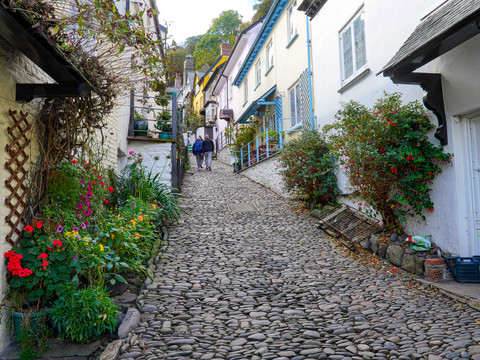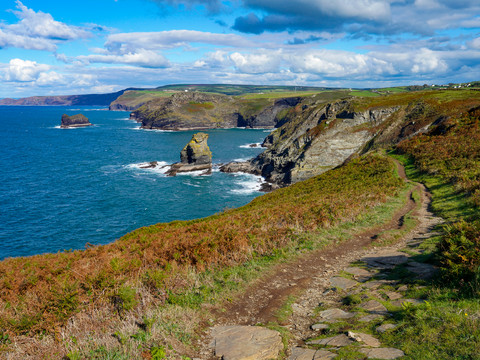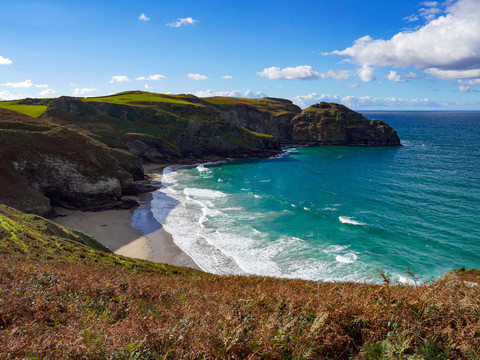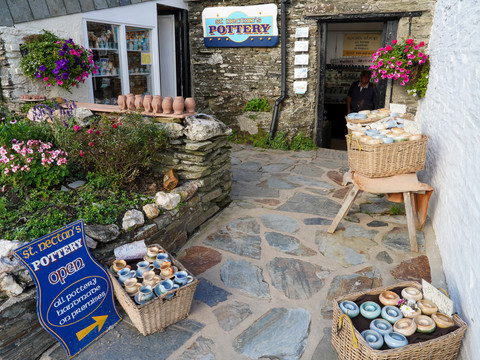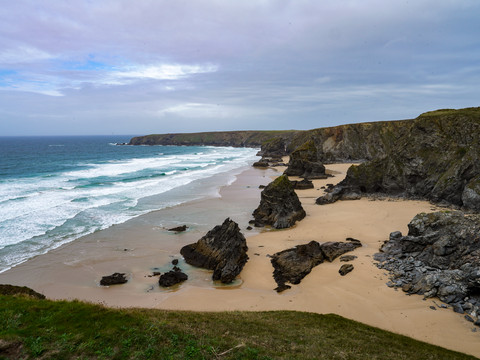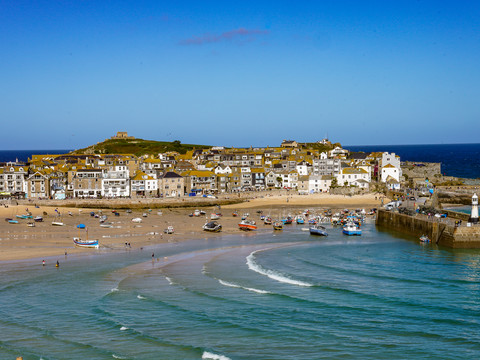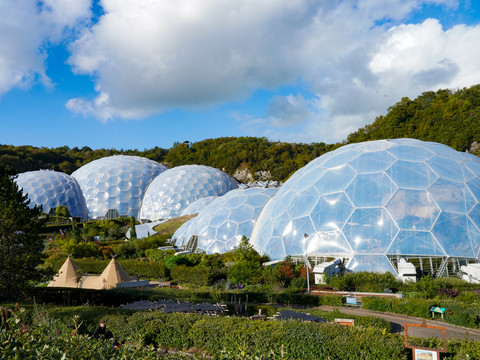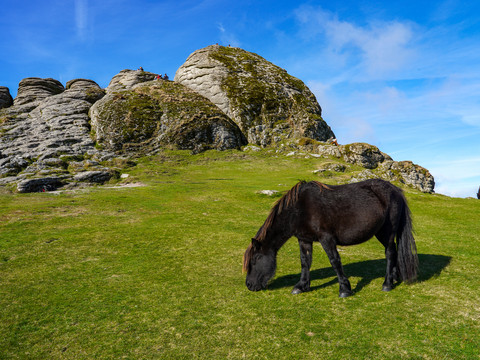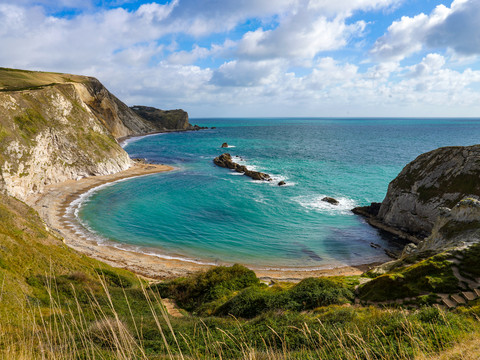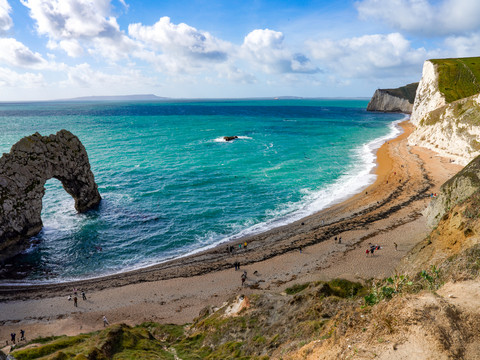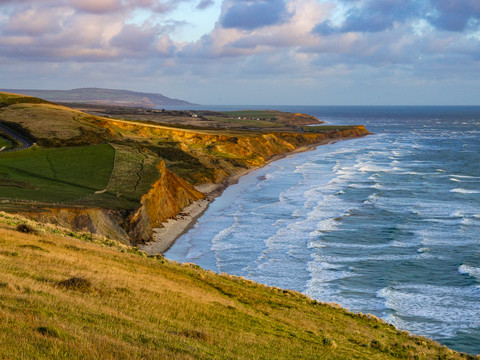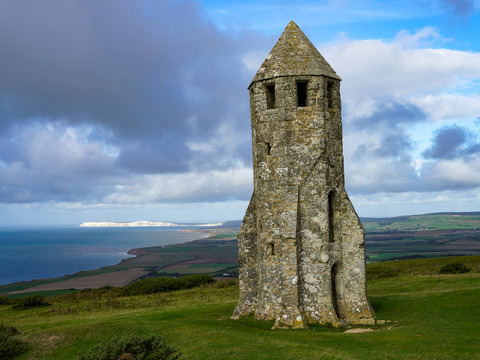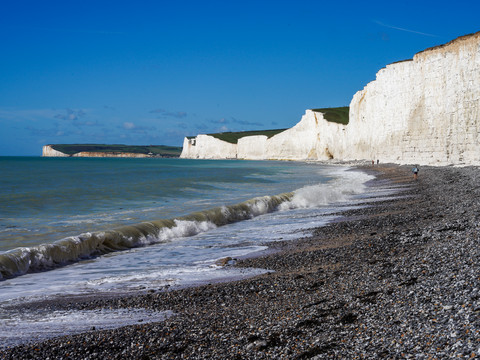The South of England is surprisingly and delightfully diverse: magnificent white cliffs, long sandy beaches, seaside resorts steeped in tradition, picturesque fishing villages, fantastic gardens, defiant castles and extravagant country houses. And everywhere again and again: cosy pubs as well as farm shops with coffee bistros and pretty small towns with impressive churches. For active holidaymakers, there is the 1000 km long-distance footpath along the entire coast and kilometre-long beaches with high swells for surfers.
From Kent to Cornwall, the south of England is a holiday destination full of surprises that is best discovered with a rental car or your own vehicle. Getting there by car is surprisingly easy. It takes just 30 minutes to reach the south-east coast of England from Calais in northern France in the comfort of a motorail train, and you won't even notice that you've raced under the English Channel. By the way, a trip through the south of England can be perfectly combined with a city break in London. From the Eurotunnel station in England, it takes just under two hours to reach the world metropolis.
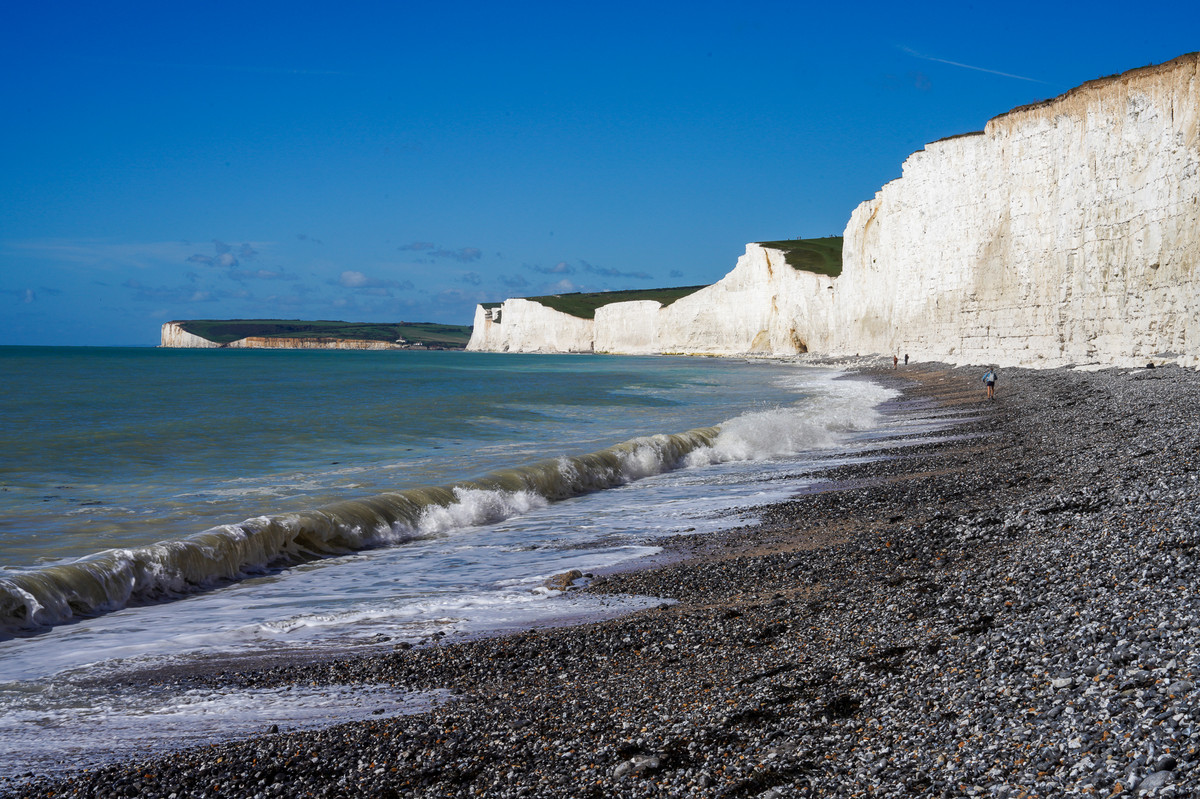
With or without London - start your trip to the south of England in flower-filled Rye. You can't get lost in Rye - the town planners of yesteryear went to great lengths to lay out the cobbled lanes and streets rectangularly within the town walls. Start your stroll at the bottom of Strand Quay, where the distinctive black-tarred warehouses stand. From here you only need to stroll upwards: one street more beautiful, colourful and individual than the other.
Beyond Eastbourne, nature beckons and is made for hiking birds. The first section of the 130 km long South Down walking trail can be done in 4 hours and first leads to the famous steep cliff formation Beachy Head (163m), the highest chalk cliff in Great Britain. The cliff edges shine brilliant white. If you walk a little further, you will see the red and white lighthouse, which has been defying the winds and waves since 1902. Passing the old Belle Tout lighthouse, you reach the Seven Sisters cliffs, where you can stop for refreshments in the small Birling Gap cove at the coffee shop of the same name. At the cliff end of the Seven Sisters you will finally reach the mouth of the tranquil little river Cuckmere. The bus will take you comfortably to the starting point in Eastbourne. Stay overnight in Eastbourne or, even better, in Brighton, the epitome of the English seaside resort with its Victorian pier, lantern-adorned promenades, long pebble beach and gleaming white rows of houses. "London by the sea" is always crowded, in a party mood, young, a bit quirky and old-fashioned at the same time.
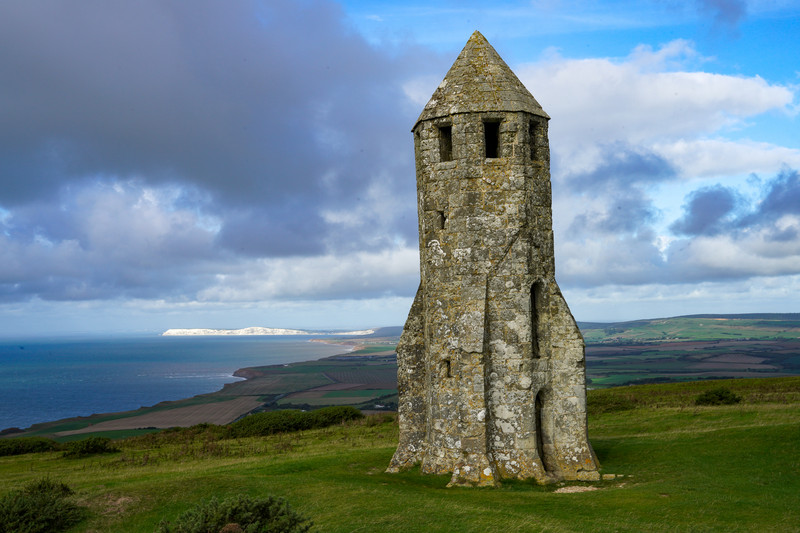
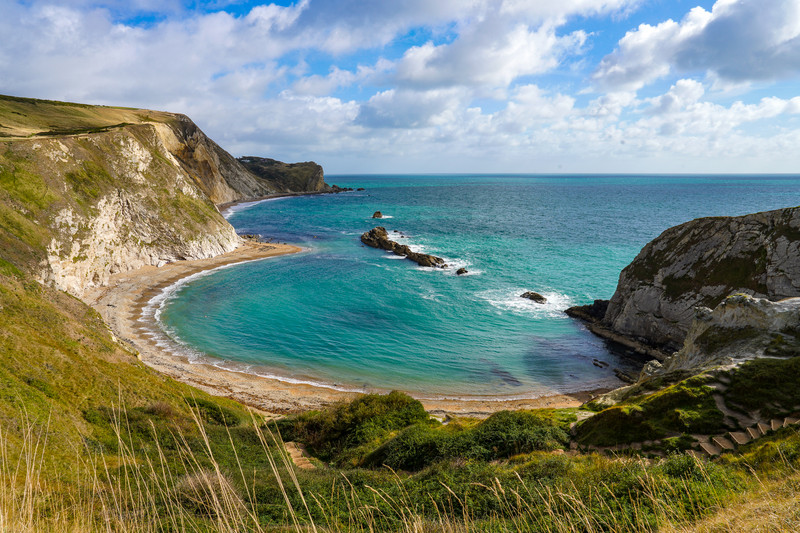
Now it's off across south-west England. After a stop at Stonehenge, probably the most famous stone circle in the world, which attracts millions of visitors from all over the world, I recommend a stop in Bath, a UNESCO World Heritage Site. Bath, for many the most beautiful city in England, owes its name to the fact that the only hot springs in the island kingdom bubble up from the ground here. The heart of the city is the Abbey Churchyard around the corner with the glorious west portal of the abbey, right next to it is the imposing site of the uncovered Roman baths. From here, the beautifully laid out Bath Street leads to the shopping streets and pedestrian zones of the city centre. Don't miss a visit to Pulteney Bridge, which carries two narrow rows of shops on its arches and is somewhat reminiscent of the Ponte Vecchio in Florence. A nice souvenir photo with the terraced banks of the Avon Loop can be taken not far from the bridge. In the evening, treat yourself to a soothing bath - either in the public baths of the
Thermae Bath Spa, a light-flooded glass cube with a luxurious multi-storey thermal bathscape and an open pool area on the roof, or stay at the noble hotel The Gainsborough and Spa with its own bathing and sauna area.
The next day you can head for the coast with renewed energy. If you want to see red deer in the wild, there are several recommended safari tours in Exmoor National Park. Once you reach the north-west coast of Devon, don't miss what is probably England's most famous fishing village. Clovelly is now a listed building and its inhabitants are a close-knit community. After paying the entrance fee, you walk steeply down a cobbled path with narrow archways to the crescent-shaped harbour. In front of the tiny cottages in the pretty front gardens with wild flowers are flat wooden sledges - besides pack mules, the usual means of transport for food, waste and furniture.
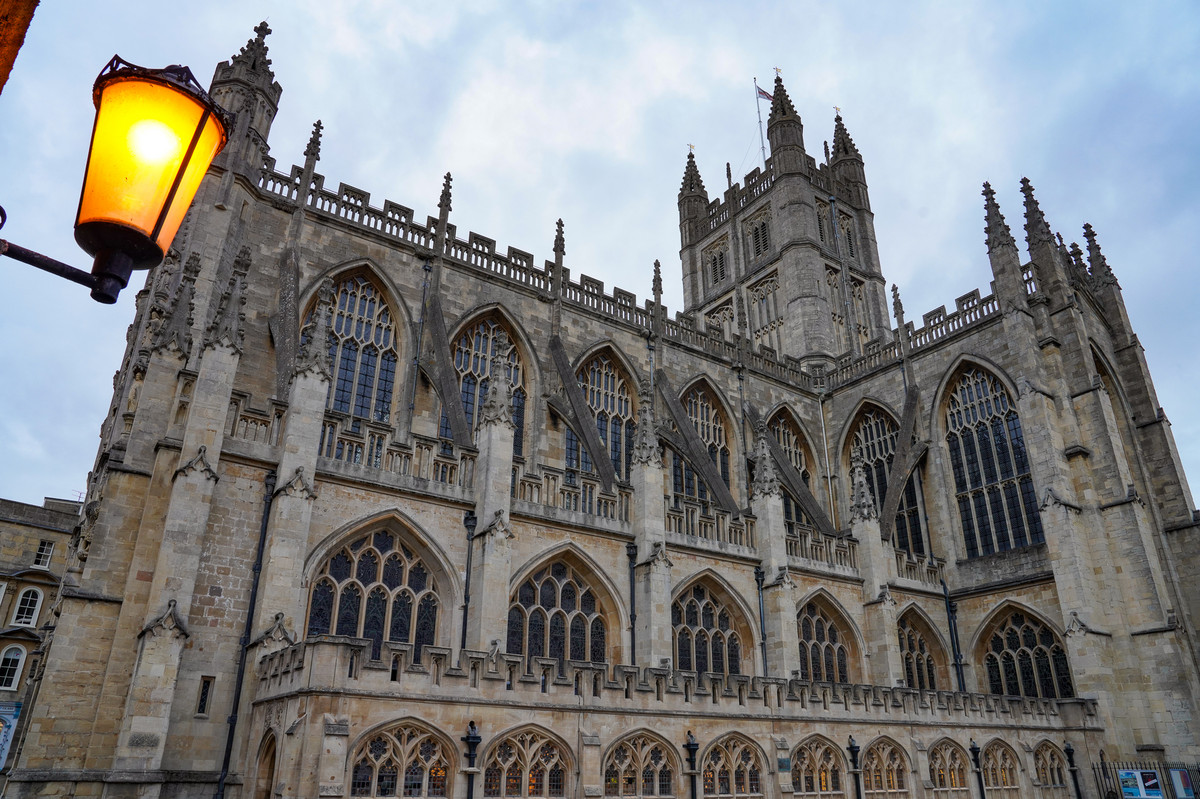
Strategically located to explore the surrounding area and settle down for a few days is the cute little village of Boscastle, already in the province of Cornwall. A river flows into the small sheltered harbour, whose boats lie on the sand at low tide, waiting for the next tide. Flower-lined cottages line charming Dunn Street. If you like coffee and delicious cakes, we recommend the farm shop above the village. A recommended, but quite demanding coastal walk to the famous ruins of Tintagel Castle starts here. Wonderful cliff paths, springy meadows and magnificent views make the effort worthwhile. At the end of the three-hour hike, Tintagel Castle awaits; the remains of the castle defy on two steep cliffs, connected by a suspension bridge. According to legend, King Arthur grew up here.
If you like surfing or would like to give it a try, Newquay and its many sandy beaches are highly recommended. In Watergate Bay, you can watch professionals and newcomers ride the waves or try it yourself. If you prefer a more leisurely pace, take a trip to the zoo or the Blue Reef Aquarium. A few kilometres further north are the stately boulders of Bedruthan. Be sure to make a stop!
Even further south lies St Ives, for many the epitome of Cornwall, as the fishing village is considered the most beautiful holiday resort on the entire west coast. The town became famous around 1900 when numerous artists settled here. Today, the Tate Gallery is internationally renowned. If you approach the village via the coastal road, you will soon catch a glimpse of the nested houses nestled close to the harbour and lined up around the harbour bay - a beautiful sight. A stroll along the promenade is a must. Stop off at one of the many restaurants and pubs - for example, the Porthminster Café, where you can enjoy delicious fish. The sand dunes of Godfrey Point and the surrounding bays invite you for a refreshing swim.
The answer to France's Mont Saint Michel is called St Michaels Mount in England. Then as now, large crowds of visitors flock to the offshore tidal island. At low tide you walk over a cobblestone causeway, at high tide you are ferried across in small boats. Formerly a Celtic monastery, St Michael's Mount was one of England's most important pilgrimage sites in the Middle Ages. Today, the island with its castle and gardens belongs to the National Trust.
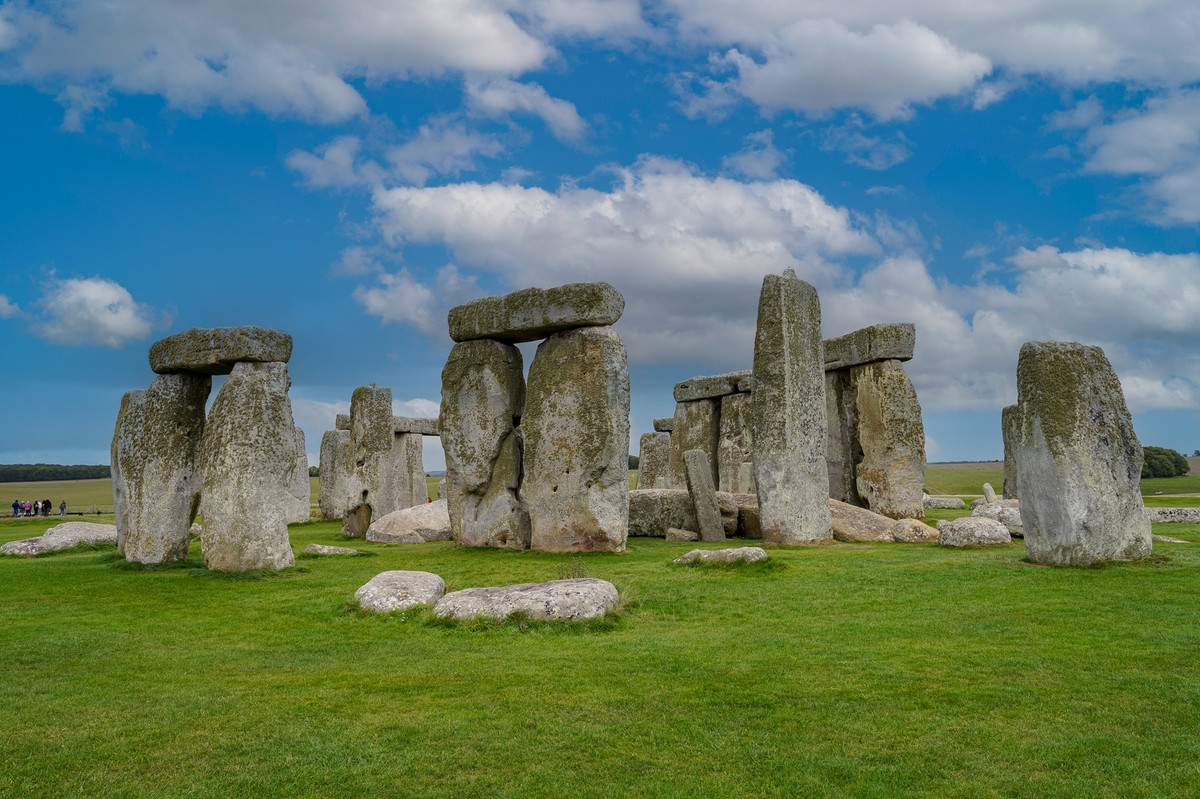
Speaking of gardens: you absolutely have to visit at least one garden on a trip to England. The mild microclimate allows flowers and palms to grow that otherwise only thrive in the Mediterranean. The most spectacular and innovative garden complex in England, the "Eden Project", attracts visitors with two giant honeycomb-shaped bubbles: They are the largest greenhouses in the world, designed by star architect Nicholas Grimshaq. The futuristic biomes present the different climatic regions of the earth with their flora.
If you are looking for pure peace and nature, you will find it in Whitsand Bay. The beach is a paradise for surfers, but with strong currents. Hiking enthusiasts also get their money's worth here. You can even meet wild horses on the coastal footpath. When you enjoy the sunset in your own cottage in the middle of the cliffs in the evening and listen to the crashing waves, all the problems of this world seem far away - a place of longing!
Via the harbour town of Plymouth, which houses, among other things, the largest aquarium in England with a coral reef, sharks and seahorses, we head for the hills of Dartmoor National Park, a 900 km2 high moor with olive-green hills dotted with huge granite blocks and bizarre stone boulders. Early historical sites, remains of Stone Age settlements, mounds and graves are everywhere. If you are short on time, the short hike to Haytor Rocks is recommended. Once at the top, the view sweeps over the wonderful expanse of the famous Dartmoor and immediately loses the fear and terror suggested in Arthur Conan Doyle's mystery novel "The Hound of the Baskervilles".
If you are interested in German literature and even more half-timbered architecture, Calw is recommended. Writer Herman Hesse lived and worked here. The house where he was born is on the market square. The writer grew up here until he later moved to Basel. The Hermann Hesse Museum contains extensive documentation on the great poet, who was awarded the Nobel Prize for Literature in 1946. The town, which is well worth a visit, is full of colourful half-timbered houses and secluded squares. The tannery as well as the drapery trade brought wealth to Calw, which can still be seen today. On Saturdays, the market square is buzzing with life, and the weekly market attracts everyone from Calw outside. Then people not only go shopping, but also celebrate the weekend in the nice cafés all around.
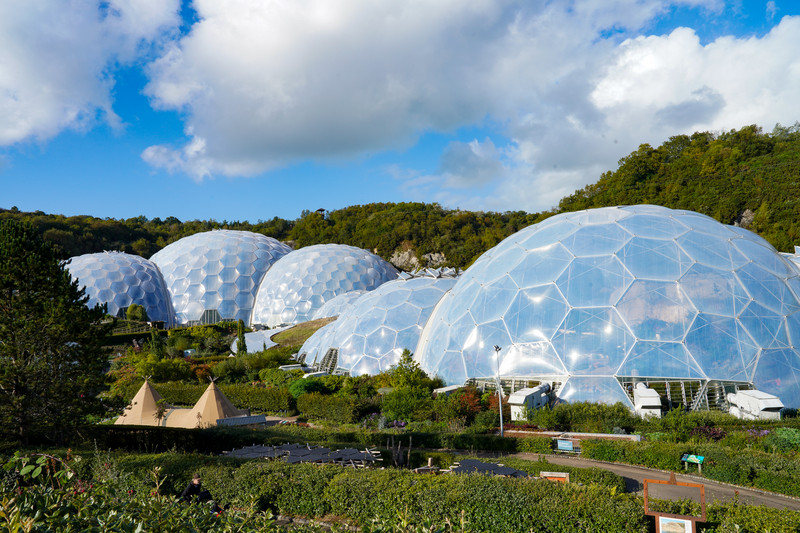
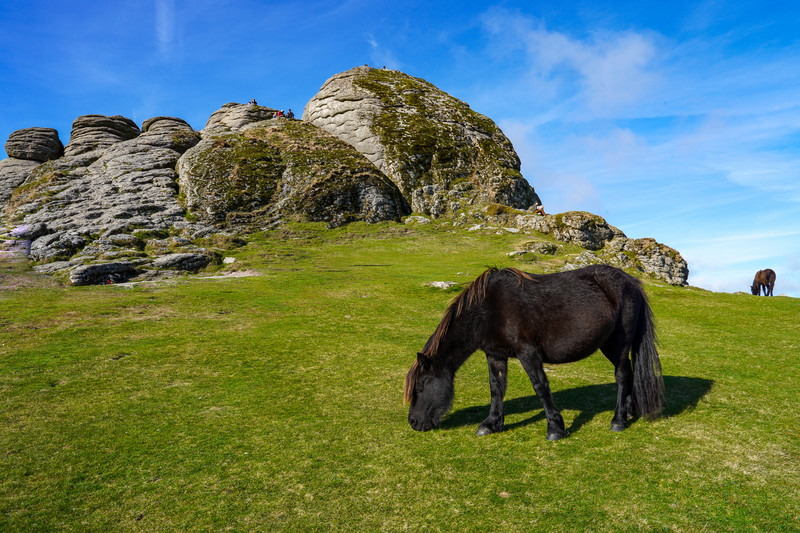
The end of a trip to the south of England could be dedicated to the Isle of Wight. But before that, be sure to take a short detour to the rocky Durdle Door and the sea-washed Lulworth Cove. Two spectacular sights of nature that can be easily combined on a short hike, as both natural wonders are only 3 km apart.
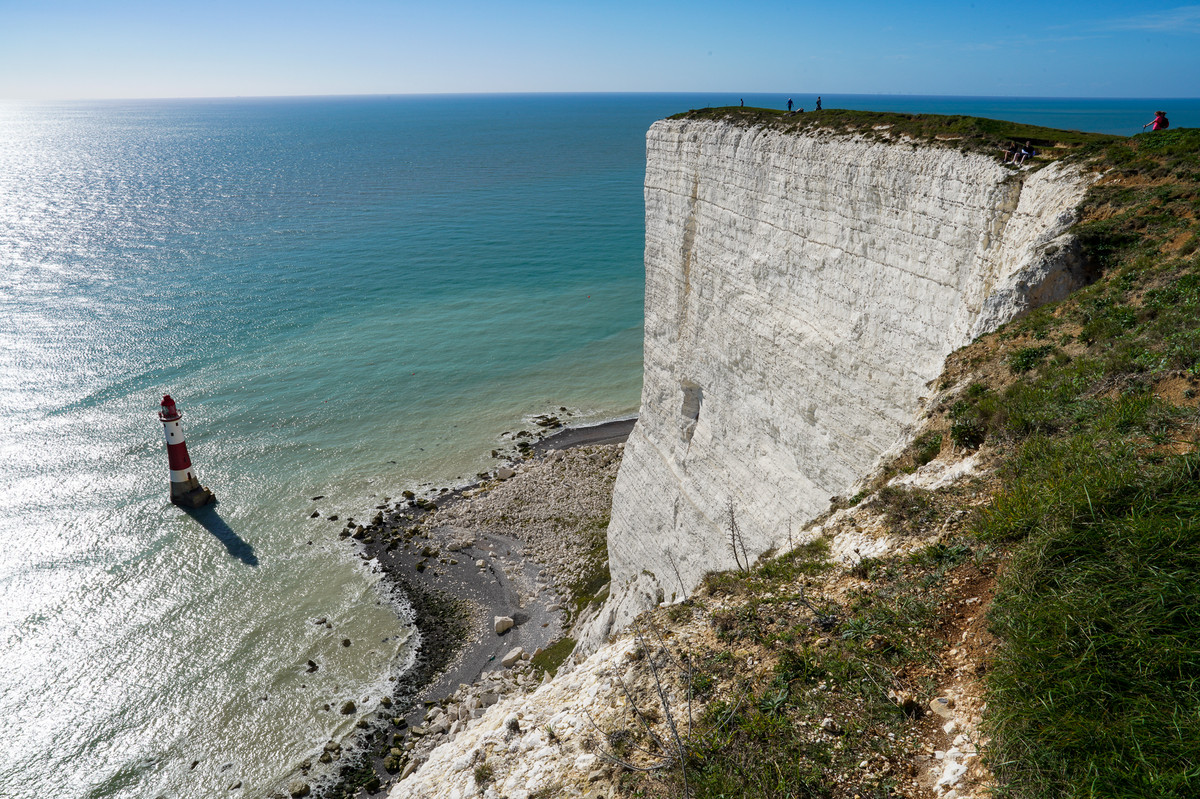
With 380 km2, the Isle of Wight is a miniature version of England - with chalk cliffs, pretty villages, cliff paths for long hikes, small fishing villages and towns that have evolved into seaside resorts over time. Whether sailing, hiking, surfing or simply relaxing - everyone can find their own happiness on the island. Queen Victoria also discovered this spot for herself when she built her summer residence here in 1845. The opulent private home called Osbourne House is open to the public today. The western tip of the island is geologically interesting and protected for over 45 km. White chalk cliffs surround Freshwater Bay, and the towering chalk spires of the Needles are the island's landmark. You can see them particularly well from the chairlift at the adventure centre and end up in Alum Bay, where the rocks shine in over ten different colours and layers at the edge of the sea.

To properly prepare for your trip
How to get there:
By car, by train via Paris or by air
How to get around:
Hire a car or drive your own
How long to go:
At least 2 weeks
Best time to travel:
Spring to autumn
Highlights:
Seven Sisters, Bath, Clovelly, coastal walk, Isle of Wight, Durdle Door, St Ives, St Michaels Mount.
Accommodation Tip Bath:
https://www.thegainsboroughbathspa.co.uk
Accommodation tip Isle of Wight:
https://exclusive-stay.com/de/o/puckaster-cove-luxury-yurt,59yl1.html
Surfing:
https://cornishwave.com
Realised by Michael Bachmann
Further travel pictures under www.kissed-by-nature.com



